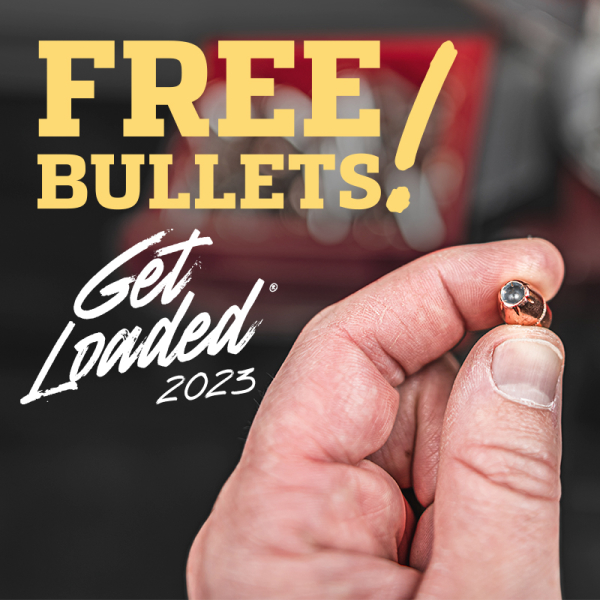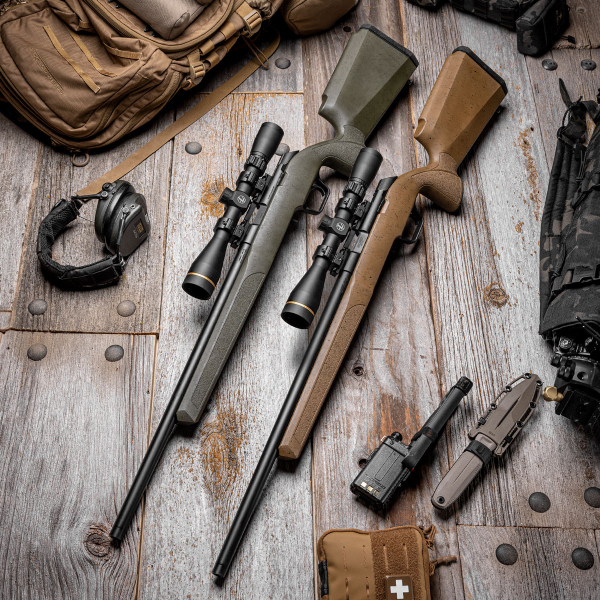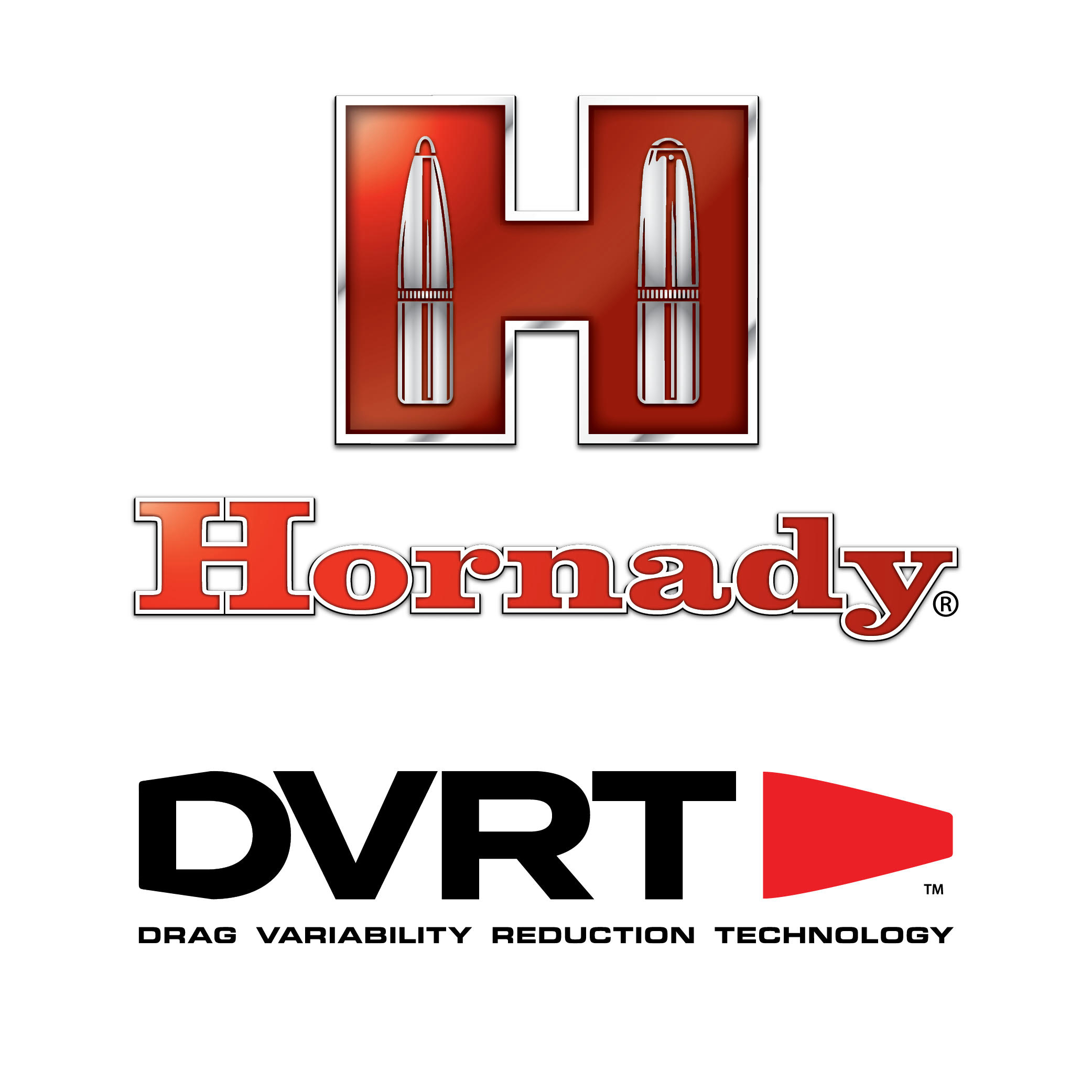Tips for Michigan Handgun Hunters
By Glen Wunderlich
Charter Member Professional Outdoor Media Association (POMA)
Back in the ‘70s, I became familiar with an expert in the art of handgun hunting, Bob Milek. His skills intrigued me to the point that I purchased the ultimate handgun designed for hunting or target shooting: the Thompson/Center Contender single-shot pistol. Its interchangeable barrel configuration allows the firearm to be converted from the most diminutive rimfire cartridges to dangerous game calibers typically found only in big-game rifles. Although the pistol is no longer produced, they are still widely available.
Below: I shoot the Custom Contender with 500-grain Hornady round nose.
Although the Contender was designed for the hunter, Michigan initially excluded single-shot pistols from use afield in Zone III – the Southern zone. Imagine the thinking, or lack thereof, behind the ban. I couldn’t understand our lawmakers’ logic, but a year later they came to their senses and made them legal with straight-wall cartridges similar to today’s laws for long guns in Zone III. Over the years, I’ve used pistols to take everything from small game to whitetail deer with various calibers from .22 long rifle to sledgehammer-like .45/70 caliber custom loads.
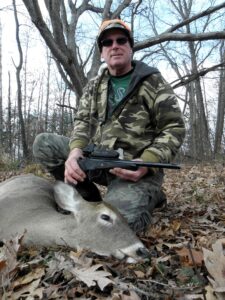
T/C Contender in .45/70 Custom JDJ Barrel and EOTech Optic
Here is the law relative to hunting with pistols in Michigan: A conventional (smokeless powder) handgun must be .35-caliber or larger and loaded with straight-walled cartridges and may be single- or multiple-shot but cannot exceed a maximum capacity of nine rounds in the barrel and magazine combined. Note that this rule differs from that of rifles in Zone III in that there are no cartridge case length restrictions.
If you decide to test your skills afield with a pistol, here are some tips to get the job done.
* Eye and ear protection is highly recommended. Electronic ear muffs are a good option.
* Hunting from a tree stand or raised platform is legal with pistols. To steady shots, treestand safety rails make for good shooting rests. Make sure there is padding on the rail; any hard surface rest is to be avoided.
* If hunting from an enclosed shooting blind, use of sandbags or a bipod is recommended.
* If still hunting, look for trees as rests when pausing, using your off hand for support. Another option is to employ commercial shooting sticks, but some folks fashion their own to save money.
* Unless one hunts in confined areas where shots are within 50 yards or less, having a scoped handgun will increase accuracy. Typically, long-eye relief scopes are used, but limit the magnification to a maximum of 6 power or less. Anything greater can cause a hunter to fumble with locating targets in the heat of the moment.
* Consider red dot optics without any magnifying lens for quick target acquisition. Aimpoint and EOTech optics are some of the finest on the market and are worth a look, although pricey.
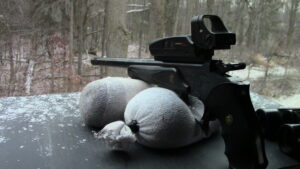
T/C Contender with EOTech Optic
* Holsters are a must to keep both hands free to climb or otherwise traverse the landscape.
In summary, handgun hunting can be rewarding for those seeking a challenge. However, the 9 out of 10 rule always applies: You must be able to keep shots within a conservative bull’s eye of 6 inches in diameter 9 out of 10 shots. If you can’t, get closer to the target until you meet the critical, self-imposed ethical standards.

